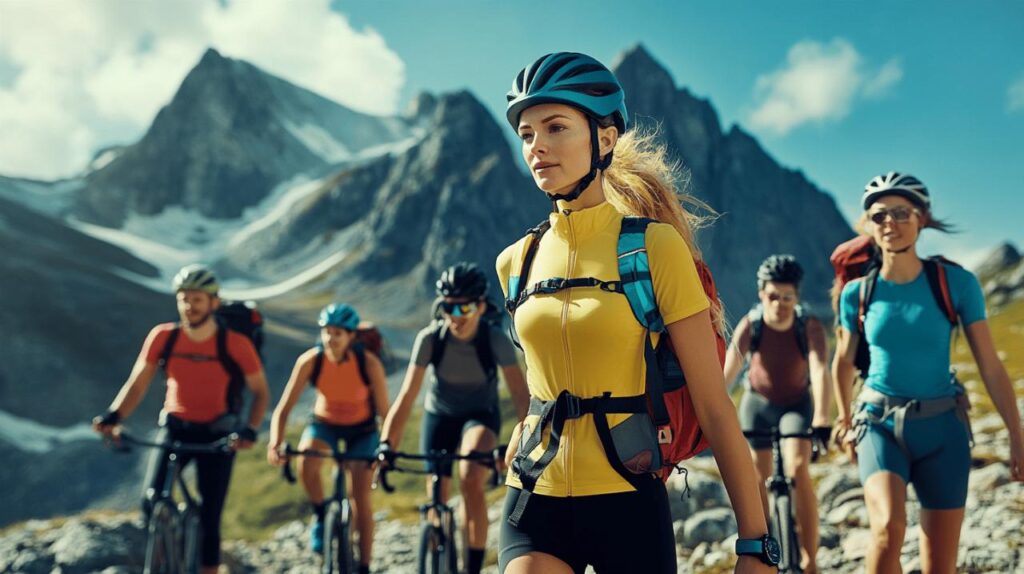Venturing into the great outdoors for sports and recreational activities offers incredible experiences, but it also comes with inherent risks that shouldn’t be overlooked. Whether you’re planning a hiking expedition, a camping trip, or engaging in watersports, prioritizing safety ensures your adventures remain enjoyable rather than becoming cautionary tales. This comprehensive guide provides essential safety tips to help outdoor enthusiasts of all levels prepare properly and respond effectively to potential challenges.
Proper preparation before heading out
Thorough preparation forms the foundation of any safe outdoor adventure. Before embarking on your journey, research your destination extensively to understand the terrain, typical weather patterns, and any location-specific hazards you might encounter. Many outdoor accidents occur because participants failed to investigate the environment they were entering. You can find valuable information about various outdoor activities at https://www.clubdeportivosapporo.es/, which features guides and news about different sports and necessary equipment.
Creating a comprehensive pre-activity checklist
Developing a detailed checklist helps ensure you don’t forget crucial items or steps. Your list should include appropriate clothing, navigation tools, emergency supplies, and activity-specific gear. Remember to check all equipment for functionality before departure, as discovering a broken compass or torn tent mid-adventure can create dangerous situations. Additionally, create and share a detailed trip plan with someone reliable who isn’t joining you, including your intended route, expected return time, and checkpoints along the way.
Researching terrain and location-specific hazards
Each outdoor environment presents unique challenges. Mountain trails may have sudden elevation changes and loose rocks, forests might house wildlife or poisonous plants, and waterways can have hidden currents or submerged obstacles. Studying these potential hazards allows you to prepare appropriate responses should you encounter them. Local ranger stations, outdoor adventure shops, and experienced guides can provide valuable insights about specific locations that might not appear in general guides.
Essential safety equipment for outdoor sports
The right safety equipment serves as your first line of defense against outdoor risks. Different activities require specific protective gear—helmets for cycling, climbing, or trail running; life jackets for watersports; and sturdy boots with ankle support for hiking. Beyond activity-specific protection, certain universal safety items should accompany all outdoor adventures, including a comprehensive first aid kit, emergency communication device, and navigation tools.
Sport-specific protective gear requirements
Each outdoor activity has its own set of safety equipment requirements. Climbers need harnesses, ropes, and carabiners; paddleboarders require life vests and leashes; and cyclists must wear helmets and high-visibility clothing. Investing in quality gear from reputable outdoor adventure shops ensures reliability when you need it most. Remember that proper fit is crucial—ill-fitting safety equipment may fail to protect you adequately or could even cause injuries itself.
Maintenance and inspection of safety equipment
Safety gear requires regular maintenance and inspection to remain effective. Ropes can fray, helmet straps can weaken, and first aid supplies can expire. Establish a routine for checking your equipment before each outing and replace damaged items immediately. Keep detailed records of when you purchased critical safety items, as many have recommended replacement schedules even if they appear undamaged. This proactive approach helps prevent equipment failures in critical moments.
Weather considerations and adaptations
Weather conditions can transform a pleasant outdoor experience into a dangerous situation within minutes. Checking forecasts before departure provides crucial information, but understanding how to recognize changing weather patterns in the field is equally important. Look for building clouds, sudden temperature changes, or shifts in wind direction as potential indicators of approaching storms.
Understanding weather forecasts and warning signs
Modern technology provides detailed weather information, but interpreting forecasts correctly requires some knowledge. Learn what different weather warnings mean for your specific activity and location. For instance, a flash flood warning might be more immediately dangerous to hikers in canyon areas than to those on mountain ridges. Remember that forecasts become less reliable the further in advance they are, so check for updates frequently before your departure.
Adapting activities to changing weather conditions
Flexibility allows for safer outdoor experiences. If weather conditions deteriorate, be prepared to modify your plans or even abandon them entirely. Develop contingency plans before starting your activity, identifying potential shelter locations and exit routes. When thunder occurs, remember the 30-30 rule: seek shelter if the time between lightning and thunder is less than 30 seconds, and wait 30 minutes after the last thunder before resuming activities.
Understanding personal limits and skills
One of the most common causes of outdoor accidents is participants overestimating their abilities or underestimating the demands of an activity. Realistic self-assessment helps prevent situations where you might find yourself beyond your capabilities in potentially dangerous environments. This doesn’t mean avoiding challenges entirely, but rather approaching them with appropriate preparation and progression.

Honest assessment of fitness and experience levels
Before attempting any outdoor activity, honestly evaluate your physical conditioning, technical skills, and experience. Choose adventures that match your current abilities while providing reasonable challenges for growth. If you’re new to an activity, consider joining organized groups with experienced guides who can provide support and valuable learning opportunities. Many outdoor adventure shops offer introductory courses that teach fundamental skills in controlled environments.
Gradual progression in skill development
Developing outdoor skills requires a methodical approach. Start with less demanding versions of activities and gradually increase difficulty as your competence grows. For example, begin hiking on well-marked, shorter trails before attempting remote backcountry routes. This progressive approach builds not only technical abilities but also the judgment to recognize and respond to potential hazards effectively.
Environmental awareness and risk management
Natural environments contain numerous potential hazards requiring continuous awareness. These range from physical features like steep dropoffs or unstable surfaces to biological concerns such as poisonous plants or territorial wildlife. Developing environmental literacy helps you identify these risks before they become immediate threats.
Identifying potential hazards in natural settings
Learning to recognize environmental dangers represents an essential outdoor skill. This includes identifying common poisonous plants like poison ivy or nettles, recognizing signs of unstable terrain, and understanding wildlife behavior patterns. Resources from nature conservation organizations and local ranger stations can provide region-specific information about potential hazards you might encounter during your activities.
Techniques for minimising environmental risks
Once you’ve identified potential hazards, employing appropriate risk management strategies becomes possible. This might mean giving wildlife plenty of space, avoiding certain areas during specific seasons, or using protective clothing and repellents against insects. Remember that environmental conditions can change rapidly—a dry riverbed might become dangerous after rainfall upstream, and wildlife behavior may alter during breeding seasons.
Communication protocols for outdoor safety
Effective communication forms a critical component of outdoor safety, particularly for activities in remote areas where emergency services may be difficult to access. Establishing clear protocols before departure ensures everyone understands how to stay connected and what actions to take if communication fails.
Creating detailed trip plans and sharing them
Before leaving for any outdoor adventure, create a comprehensive trip plan detailing your route, expected timeline, and potential alternate paths. Share this information with a reliable person who isn’t joining the trip, and establish check-in procedures. Agree on specific actions they should take if you fail to check in at designated times, such as contacting emergency services with your last known location and planned route.
Emergency communication devices and signals
Modern technology offers various options for emergency communication in remote areas. Satellite phones, personal locator beacons, and satellite messengers can summon help even when outside cellular coverage. Additionally, learn universal distress signals like three of anything—whistle blasts, flashes, or fires—which traditionally indicate an emergency in the outdoors. Always carry multiple communication methods since any single system might fail.
First aid and emergency preparedness
When accidents occur in outdoor settings, professional medical help may be hours or even days away. Basic first aid knowledge and appropriate supplies enable you to manage injuries and illnesses until additional assistance arrives. This self-reliance represents an essential aspect of responsible outdoor participation.
Building and maintaining a comprehensive first aid kit
Your outdoor first aid kit should balance comprehensiveness with portability. Include supplies for treating common outdoor injuries like cuts, sprains, blisters, and burns, along with any personal medications. Regularly check expiration dates and replace used or outdated items. Consider supplementing standard supplies with emergency items like thermal blankets, water purification methods, and fire-starting tools for more remote adventures.
Basic emergency response techniques for outdoor settings
Knowledge of wilderness first aid differs somewhat from standard first aid practices due to extended care scenarios and environmental challenges. Learn techniques for improvising splints, managing exposure to extreme temperatures, and safely moving injured individuals when necessary. Organizations like the Red Cross offer specific wilderness first aid courses designed for outdoor enthusiasts that cover these specialized skills.
Nutrition and hydration strategies
Maintaining proper nutrition and hydration levels directly impacts your decision-making abilities, physical performance, and temperature regulation—all critical factors in outdoor safety. Dehydration and energy depletion can quickly transform manageable situations into emergencies by impairing judgment and physical capabilities.
Planning appropriate food and water supplies
Calculate your water needs based on activity intensity, duration, weather conditions, and personal factors. Generally, carrying more water than you expect to need provides a crucial safety margin. For food, focus on energy-dense options that require minimal preparation and resist spoilage. Freeze-dried meals, energy bars, nuts, and dried fruits offer practical nutrition for outdoor activities while balancing weight considerations.
Recognising signs of dehydration and energy depletion
Learn to identify early indicators of dehydration and energy depletion in yourself and companions. Symptoms like headache, dizziness, irritability, or unusual fatigue often signal these conditions before they become severe. Monitoring urine color provides a simple assessment tool—pale yellow indicates adequate hydration, while darker colors suggest increasing dehydration. Establish regular eating and drinking schedules rather than waiting until thirst or hunger becomes pronounced.

